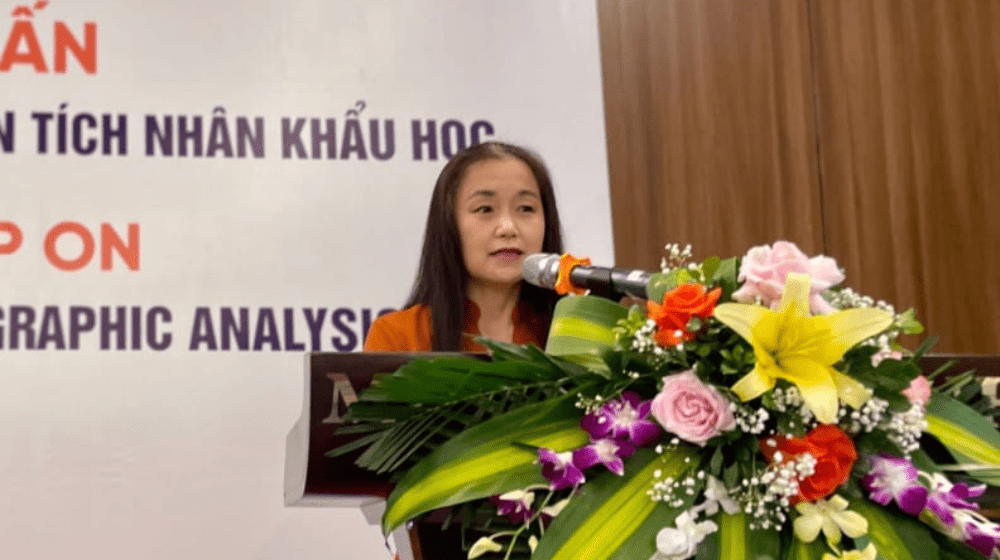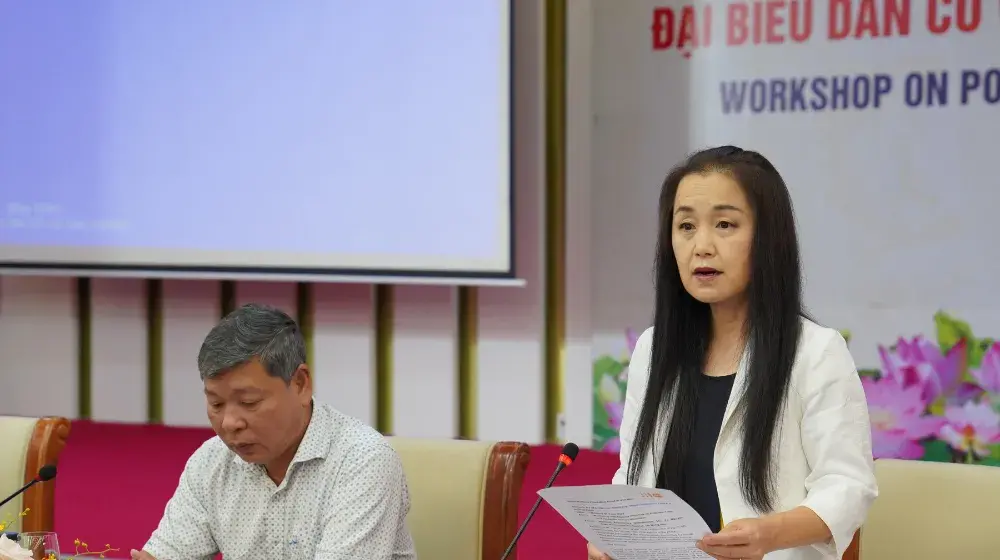- Mr. Nguyen Trung Tien, Deputy DG, General Statistics Office (GSO)
- Participants of the training.
I am very pleased to be here in Ha Long city today to attend the opening session of the training course on advanced statistics models for demographic analysis. This is part of the initiative to strengthen the capacity of the General Statistics Office to analyse and disseminate data on population and sexual and reproductive health. Following the recent and successful launch of the new GSO project under UNFPA’s new 10th country programme 2022-2026, the workshop this week is the very first activity. It is to generate and utilise high-quality population and development data with latest tools and methodologies, which is critical for developing and monitoring socioeconomic development policies, strategies, and plans, as well as for tracking progress towards achieving the Sustainable Development Goals by 2030.
On behalf of UNFPA, I would like to thank GSO and other partners for their tremendous efforts in getting the project approved by the Government and working closely with UNFPA, so as to quickly implement the annual work plan for 2022. We highly appreciate the achievements made by GSO, and we fully share our common goal, which is “Better Data, Better Lives.”
Dear participants,
Data and evidence are the prerequisite for solid policy and decision-making. And it is fundamental to ensure a strong capacity of statisticians and demographers not only for collecting data, but also for disaggregating, analysing and disseminating data. We have in Viet Nam data from the Population and Housing Censuses and GSO’s annual population change surveys, but such data become useful only when it is analysed, particularly for emerging population issues. Otherwise, data will just stay on a bookshelf. We must bring data to life.
The report of the UN Economist Network for the UN’s 75th anniversary, which was issued in September 2020, listed out 5 Global Mega Trends which shape the world. One of them is Population Shifts, and this is even more important when we are analysing the impact of Covid-19 on mortality, fertility and migration. For Viet Nam, this is then even more critical, when the country has the largest young population in its history, and the unique demographic window of opportunity is still open to accelerate Viet Nam’s socio-economic growth and achieve SDGs. Also, population aging is progressing faster than ever before in Viet Nam. When it comes to population data, we must acknowledge that we are standing at an exceptional standpoint for demographic trends of the world and of Viet Nam.
So, we must ask ourselves. With COVID-19, do we adjust Viet Nam’s mortality rates? Are we seeing any change in fertility – are people getting pregnant and delivering babies as projected? Do we need to adjust fertility projections? Are people migrating more, or less, in this post COVID-19 period? Are Vietnamese still preferring boys to girls, and resorting to prenatal sex selection? What is the current rate of population aging, and which population groups are more prominent when we analyse the aging process?
Dear participants,
When I was studying Demography 27 years ago at the London School of Economics, I learned how to manually calculate life expectancy by manually preparing a life table from age-specific probabilities of dying, which I had to manually calculate from the number of deaths for each age group. I did it with a calculator. SPSS was just coming out, which I had to programme by myself from raw data of the demographic and health surveys and understand the determinants of child survival in an African country, Zambia. Since then, new demographic tools and methodologies progressed rapidly, also facilitated by information and digital technologies. Today, you are fortunate to be able to be exposed to the latest statistical and demographic methods, so that you do not have to use a manual calculator.
So I am pleased to introduce to you Dr. Ralph Hakkert, an international expert for our workshop this week. He is a demographer, a statistician, a senior researcher with extensive experience in population and development. He was a former Senior Technical Advisor on Data and Research in the Population and Development Branch of UNFPA HQ. He is the author of numerous articles, research papers, and guidelines on population analyses and projections. He is an experienced trainer who provided training on demographic analysis and population studies for a number of countries in Asia, Africa, Latin America, and the Caribbean.
Please extract as much knowledge, skills and experience out of Dr Hakkert this week. This is not just for you as a statistician or a demographer. This is for the development of Viet Nam. This is for your country.
I wish you all a very successful training!





